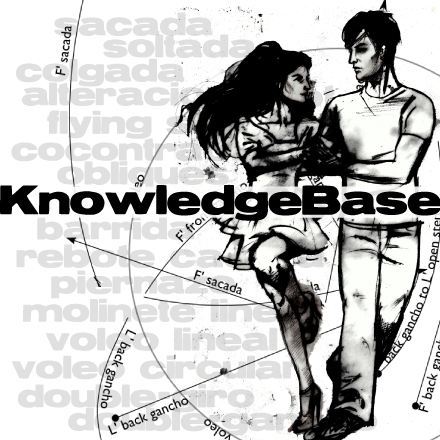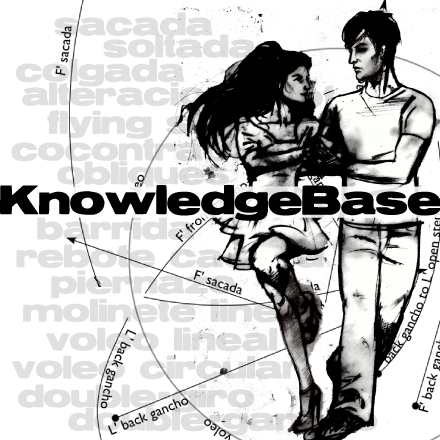In tango, we are never standing completely alone. We relate our standing bodies into a partnership through the arch of connection.
We also sometimes lean on each other. These leaning movements (aka ‘off-axis’ or ‘out-of-axis’, deprecated) are very beautiful and fun.
We can lean away from each other (colgada) or toward one another (volcada). Flying steps are small colgadas and volcadas which we distinguish for pedagogic and dynamic reasons.


A large and strong Mark can simply hold the Revel’s weight with his arms, but a greater degree of connection can be experienced if the mark also leans. In a true (mutual) volcada or colgada the partners intensify the muscle activation of the arch and embrace to support more weight.
There are a number of positions for both volcada and colgada (see the entries on these). The most advanced variations involve turning while leaning. These should not be attempted until the partners can enter and exit static leans, maintaining connection and control.
The solution to hip stabilization (and, thereby, lightness) in any off-balance position is to contract the piriformis. This prevents weight dropping into the hip joint (and thereby onto the partner) by ensuring that the leg and abdominal muscles are supporting that weight.
Further, contraction of the piriformis triggers the stabilization chain which allows us to control and adjust the position of the hip while it’s overburdened, which otherwise can be difficult.
Turning leans
Once you feel comfortable with static leans and can enter and exit them smoothly, it’s time to take the first step of a turning lean. The mark will transfer weight to one foot, then step, reestablishing the lean in a new position. And repeat. The trick is: In the same way that you gave permission to her to lean before counterbalancing her, you’ll need to send her laterally first ahead of you on the circle, and then step to reestablish your counterweight on the new vector.

Take steps around her, transferring the lean from one base leg’s hip flexion to the next.
Visualize where you are repositioning the vector with each step.
Keep your arms working equally with shoulders locked in external rotation, shoulder joints extended, and both arms in co-contraction. Make sure you don’t step away from the circle. To begin turning, your priority should be maintaining control, not taking a lot of steps. Enter the lean, making sure to establish the first static vector perfectly before starting to turn. Then try to take one perfect step, reestablishing the lean afterward. Then make a nice exit.Once you can maintain control and a smooth exit taking one turning step, try taking two. Etc. Start turning using a side step. A front step is more difficult. Try that next!











